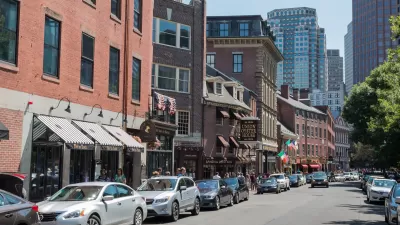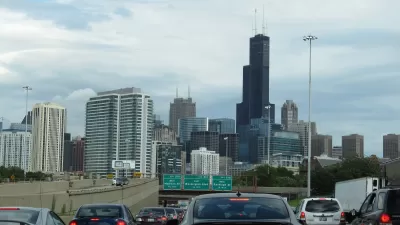Car-free for more than 15 years, Chicago opened its dying pedestrian mall on State Street to vehicular traffic in 1996, with huge success. Should Boston planners and officials consider a similar strategy for its Downtown Crossing?
"Like Downtown Crossing, which sees an estimated 230,000 people walk through every day, State Street always enjoyed heavy foot traffic. Even during its nadir in the 1980s, more than 20,000 people passed most corners of the nine-block mall every day, making it one of the most traveled areas in the city. But not until the street was reconnected to downtown did the district come back to life, city officials and planners say.
'It was just critical,' said Philip Enquist, an urban designer at Skidmore, Owings & Merrill, which designed the removal of the mall. 'I think State Street would not have succeeded had we not brought the cars back. The ripple effects have been phenomenal.'"
"'The lesson is that cities are about activity and energy,' said Elizabeth Hollander, who was Chicago's planning commissioner in the 1980s and is now a senior fellow at Tufts University. 'What they want to do is make themselves different from suburban malls - that's their niche.'
FULL STORY: Chicago's pedestrian mall solution: traffic

Study: Maui’s Plan to Convert Vacation Rentals to Long-Term Housing Could Cause Nearly $1 Billion Economic Loss
The plan would reduce visitor accommodation by 25,% resulting in 1,900 jobs lost.

Alabama: Trump Terminates Settlements for Black Communities Harmed By Raw Sewage
Trump deemed the landmark civil rights agreement “illegal DEI and environmental justice policy.”

Why Should We Subsidize Public Transportation?
Many public transit agencies face financial stress due to rising costs, declining fare revenue, and declining subsidies. Transit advocates must provide a strong business case for increasing public transit funding.

Paris Bike Boom Leads to Steep Drop in Air Pollution
The French city’s air quality has improved dramatically in the past 20 years, coinciding with a growth in cycling.

Why Housing Costs More to Build in California Than in Texas
Hard costs like labor and materials combined with ‘soft’ costs such as permitting make building in the San Francisco Bay Area almost three times as costly as in Texas cities.

San Diego County Sees a Rise in Urban Coyotes
San Diego County experiences a rise in urban coyotes, as sightings become prevalent throughout its urban neighbourhoods and surrounding areas.
Urban Design for Planners 1: Software Tools
This six-course series explores essential urban design concepts using open source software and equips planners with the tools they need to participate fully in the urban design process.
Planning for Universal Design
Learn the tools for implementing Universal Design in planning regulations.
Smith Gee Studio
Alamo Area Metropolitan Planning Organization
City of Santa Clarita
Institute for Housing and Urban Development Studies (IHS)
City of Grandview
Harvard GSD Executive Education
Toledo-Lucas County Plan Commissions
Salt Lake City
NYU Wagner Graduate School of Public Service




























